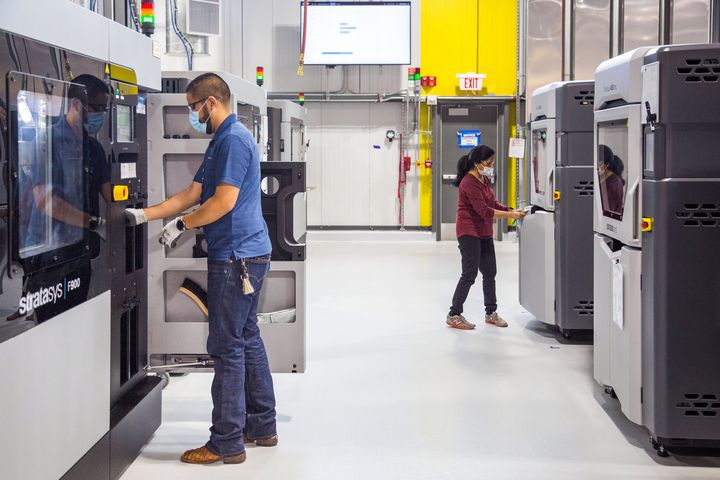
Stratasys issued an interesting press release where they describe their activities inside of GM.
GM, once the biggest automobile company in the world, has partnered with Stratasys to deepen the use of additive manufacturing technologies in the Detroit-based company.
While we see press releases of this type on a daily basis, where a 3D printing company wishes to show how an industry partner has been using their equipment / software / materials, there’s some interesting bits in this one from Stratasys.
Historically, 3D printing in the automotive industry has been experimental in nature: prototyping for parts using less-than-production-quality materials or testing of new jigs on the production lines. However, that seems to be changing.
Stratasys says regarding GM’s use of the technology:
“The company added 17 production-grade Stratasys FDM 3D printers to its fleet at the end of 2019 and has been turning to 3D printed tooling for speed, weight reduction and cost efficiency on its production lines.”
That is a significant number of machines; these are not desktop-level devices, but large commercial gear that is designed to be on the manufacturing floor.
GM’s Director of Additive Manufacturing, Ron Daul, said:
“With the pace of change in modern industry accelerating and business uncertainty increasing, 3D printing technology is helping us meet these challenges and become more nimble as a company. We’ve been on this journey for more than 30 years, but 3D printing is becoming even more widespread at our company, with more than 700 employees now trained to use the technology. Additive manufacturing is consistently providing us more rapid and efficient product development, tooling and assembly aids, with even more benefits to come.”
In addition to the large amount of equipment, it seems that GM also has a large number of trained staff: 700! To put that in perspective, that number is larger than the entire staff of several notable 3D printer companies combined.
To be clear, however, GM has multiple sites and no doubt the equipment and trained staff are split up amongst them.
While GM has apparently been using 3D printing for prototypes since 1989, they are now transitioning the technology to production uses. This is likely due to recently-available engineering materials that are suitable for production applications. In particular, GM mentions the use of Stratasys’ Nylon CF material, which is quite strong.
Some time ago I wrote about the idea of replacing metal parts with lightweight 3D printed plastic parts that are sufficiently strong and heat resistant. This is currently being pushed by a few vendors of high-temperature materials, but it seems in this case GM is able to do so even with the lower-temperature nylon materials.
It all depends on the specific engineering requirements for each part, along with the financial feasibility of producing the plastic vs. metal parts.
It appears that GM has been doing this type of part evaluation for some time, and likely will continue in the future.
Via BusinessWire
